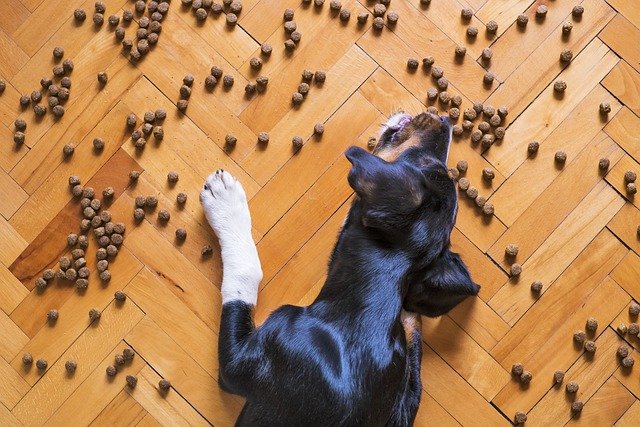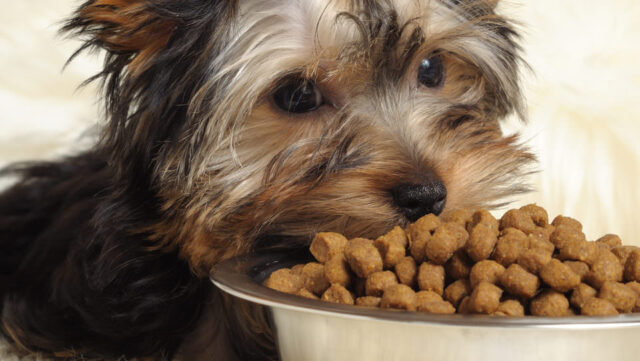A pet’s weight is about BALANCE. It is worth the trouble to make sure that your dog is not overweight. Purina’s Life Span Study showed that normal-weight dogs lived an extra 1.8 years longer than their overweight counterparts.
Think of your pet’s weight as a balancing act between input and output. When she takes in more, she has to burn off more. Summertime is great for this juggling act because her output is higher and you are so busy that her input is probably less too, since she is never eating from sheer boredom. So how do you know how much she really needs?

The easiest way is ask your veterinarian to enter your pet’s details into a computer program designed to calculate what her calorie needs are. I use my Calorie Guide program for my own pets regularly. Should your vet not have a program like this one, together you can figure out a range that can at least guide you, so certainly ask. It helps you to know how much your dog really needs when she is begging, so you can resist with a clear conscience!
Even before you talk to your vet, check out the feeding guide on the back of your pet’s food. Remember that these are very general guidelines and do not take into account any of the specifics for your pet. If you know that your pet is not getting enough exercise, round down the recommended amount. Again careful observation is critical. Always measure the food, so you know what your pet is really getting and don’t forget to account for treats. Remember, if you do not feed a premium veterinary diet, you cannot round down too much because the nutritional content is figured around the manufacturer’s suggested serving size.

If your dog really needs to lose significant weight, you will need to make the diet plan in conjunction with your vet and purchase a premium diet so you can be sure that the nutritional needs are met, much like you should consult your physician before beginning a weight loss program for yourself.
Specified mealtimes are also important. If you think about your pet as a hunter or pack member, food would not be available all the time, like it is for grazing animals. Food would be available only when the individual expended energy in the pursuit and capture of it and even then it might have to be divided among pack members. Our domestic pets are not wired for the sedentary life of ease that we afford them.
Give your pet the amount of food that you have painstakingly calculated and allow 5-10 minutes for the meal. At the end of that time, take the bowl away (preventing over-eating and boredom eating throughout the day). A side benefit of this plan is that when the next mealtime arrives, your pet is ready to eat, so he is more willing to consume that healthy diet you have chosen and also to take any medications that you may need to hide in his food.

Don’t forget since your pet doesn’t have to hunt, kill or search for his food, his mind is not exercising either. I love “enrichment toys”. These clever devices allow you to put (the measured amount of) food into the puzzle and your pet has to think about ways to manipulate the toy to retrieve it.
So if you can know how much you need to offer, tweak the amount based on your pet’s lifestyle, offer a feeding style more compatible with your pet’s wild ancestors and keep his mind and body as active as possible, you have a recipe for health and happiness!
 Toledo, United States.
Toledo, United States.